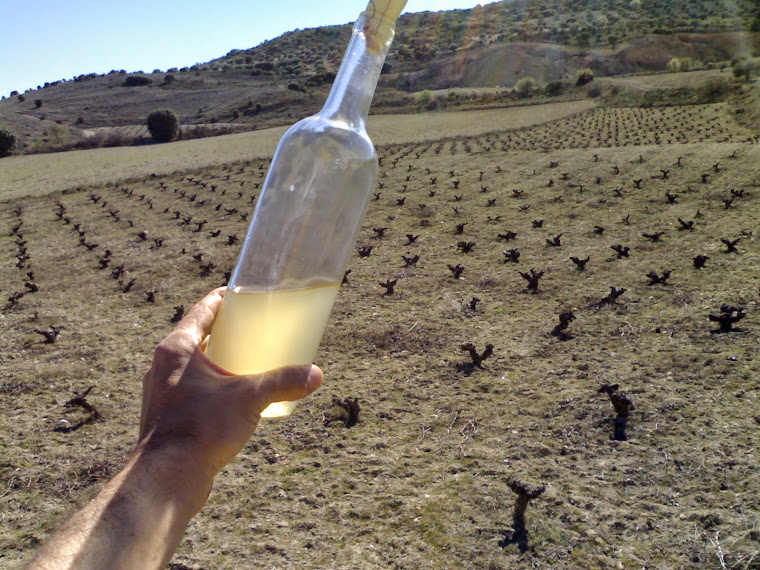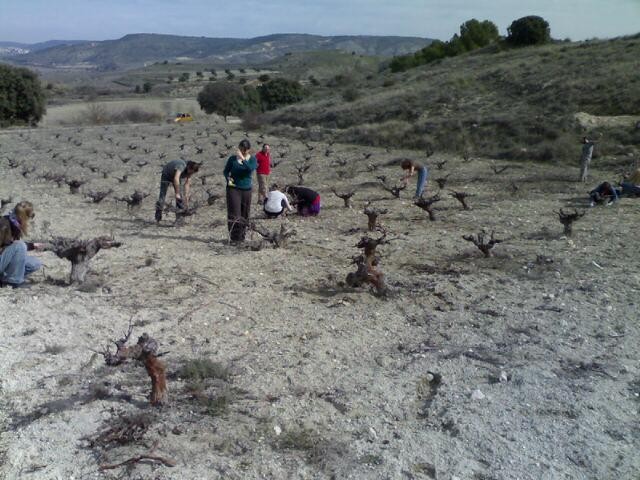The Natural Wine Fair
What to say? Was it a success? Did a lot of people turn up? Was it useful to me? Did I make a lot of contacts? Did I have a good time? Did I have sore feet? Did I pour a lot of wine? Did I sell a lot of wine? Was the dinner good? Did I take a lot of photos and videos?
Sticking on my labels
Well, the answer “yes” to all of the above except for ‘Did I sell a lot of wine?’!!! (only about 20 bottles more or less!) and ‘Did I take a lot of photos and videos? (not as many as I would have liked!)
No people yet
I’d say it was a huge success and that hundreds and hundreds of people came. I don’t have exact data from Benoît Vallée, the organizer (L’Anima del Vi), but my own personal anecdotal evidence suggests that it’s true. Right from the moment that people started arriving (at 10:30 – 11:00) I wasn’t able to sit down once or leave my table until about 9:00 in the evening.
Ready for action
I did manage to get to the bathroom once at 5:00, but my neighbouring winemaker (Alfredo Maestro) wasn’t so lucky – he told me he had to wait till 9:00 before being able to take a leak! More anecdotal evidence of the event’s success: sore feet from standing up for 12 hours straight, pouring wine and sore throat from chatting.
Getting busier
There was of course no way for us to go for lunch. But Benoît had a perfect solution: apart from the 20-odd winemakers, there was also a tapas/raciones table run by Bar Cortijo, and they brought us food at regular intervals throughout the day. My major sale of the day was in fact to them – they bought a case of my ‘Orange Airén’ as they thought that it paired perfectly with their sushi dishes. (Forgot to take photos of that!).
3 Airéns - same vineyard, same grapes, same day harvest
Left: Orange (skin contact); Centre: Normal; Right: Carbonic Maceration
Was it useful to me? I don’t know! The usefulness certainly wasn’t reflected in sales of bottles! Maybe future sales? Who knows? I think I promoted and advertised my wines a lot. I gave away about 100 fliers and about 50 business cards. And I only gave them to people who specifically asked for them – I didn’t offer them first.
Reds: Petit Verdot, Sirah, Tempranillo, Garnacha
Iconic T-shirt "I don't contain (added) sulphites"
In theory, the event was supposed to end at 5 or 6 in the evening, but at 8:00 it was still packed with people. In the end it was the sunset that drove them out; there were no lights in the cloister of the (ex)convent so it was only possible to see using torches and lighters.
Thanks to more brilliant planning by Benoît, the restaurant where we were to have dinner was just across the street so we didn’t have worry about transport. Just walk out of the convent, cross the road and go into the restaurant.
The Winemakers Dinner
The first ones of us to arrive sat down outside at the pavement tables and immediately ordered beer! It’s not the first time that this has happened. I think that after 12 hrs of tasting wine, and in anticipation of even more wine over dinner, one just has to ‘recalibrate one’s palate’ with a glass of beer or two!
Winemakers drinking beer
Luckily (for the other customers at the restaurant) we were in a separate room! I have to say that we were extremely loud and boisterous, and the staff seemed to be a bit wary if not actually worried about us! Firstly, we all arrived carrying bottles (and cases) of our own wines, which we put on the table and chairs and floor, and unceremoniously opened ourselves before even sitting down. It was like we’d been released from prison! I think each one of us was desperate to taste each others’ wines, because we’d been within sight of each other all day, but unable to leave our tables even for a few minutes.
At table
Then things started to liven up a bit! First there was a short speech from Laureano Serres, winemaker and president of the PVN (Natural Winemaker Association), in Catalán, and understood by maybe 5 or 6 of those present, but he received a huge round of applause and unanimous approval of whatever it was he said!
(Link to dinner speech: http://www.youtube.com/watch?v=hDdtswX9Q9M )
People even started smoking at the table - this is now forbidden due to a new law in Spain passed on 2nd January – but spirits were too high by this point for us to remember. But I'm exagerating - we also went outside to indulge in our dirty habit, to get a breath of fresh air and to do some smirting.
Here are some of the wines:
The most well-known was probably this one, by Thierry Puzelat (who was one of the naughty smokers!):
pending: foto Puzelat "in Cot we Trust"
pending: foto Laureano Serres "Brutal"
pending foto Clos du Tue-Boeuf Touraine Le Buisson Pouilleux
pending fotoEls Bassots - Jordi Escodà
pending fotoVinya SanFeliu
pending fotoMacon Cruzille Manganite
pending foto Dinavolo (Italia)
pending foto Alfredo maestro
























































